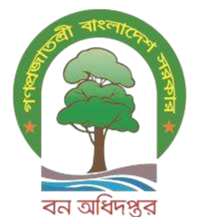বর্তমান বন ব্যবস্থাপনা
The present forest management is different from the past one in respect of its objectives. Present forest management objectives are not only to produce timber only but also to provide clean air, clean water, healthy habitat for wildlife and to act as a major source of biodiversity and nature-based tourism. The present idea of forest management is to involve people in the management and create an environment so that people can feel that they have also some stakes on trees growing on the forestland and to improve living standard of the people residing in the vicinity of the forests.
The objectives of the forest management are
- enhancing environment preservation and conservation
- increasing public participation and benefit from the forest
- institutional strengthening
- improving management practices
- addressing climate change issues
Detailed inventories of all major forest types in the country except the forests in Chittagong Hill Tracts were carried out. This has provided the necessary database for using quantitative information for writing more comprehensive management plans for different forests. Small units of uniform crop have been identified and information on these units was recorded with the help of computer based Resources Information Management System (RIMS) unit in FD.
The inventory and associated activities have made long desired information on the status, growth and yield of forests in the country available. It has been possible to develop volume and yield functions for all major plantation species and volume functions for major species in natural forests. This has made possible to regulate yield for long period of time. A new working plan format has been devised to make it possible for the use of the available information in future management plans.
An annual plan of operation is included as part of the management plan. This is basically a detailed plan of operation within the forest division and is prepared by the Divisional Forest Officer.
In recent years there has been a substantial shift in emphasis in Forestry and Forest Management from maximizing yield towards maximizing sustainability through increased participation of local population, conserving biodiversity and maintaining forestry services.
The present management systems are evolved from the past ones through various modifications in order to incorporate present objectives of forest management. Some new forest management systems are also added to address new concept in forest management such as agroforestry, homestead plantation, strip plantation, participatory forestry on encroached forest, mangrove afforestation on newly accreted land in the coastal area, reduce deforestation and forest degradation to mitigate the climate change, conservation area management to preserve wildlife habitat and biodiversity.


